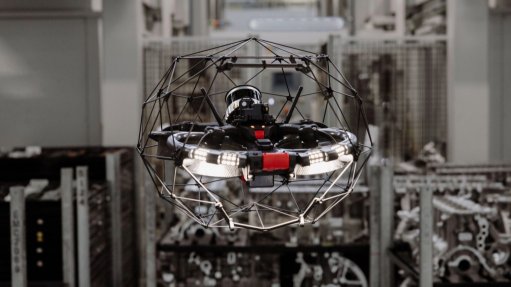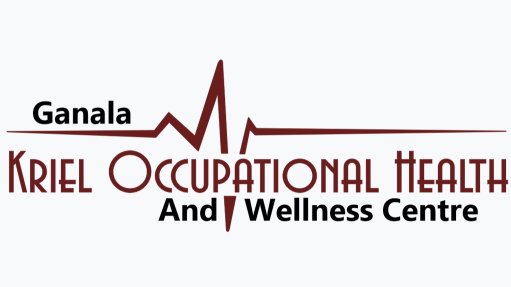The capable State and inclusive economic growth
The African National Congress’s (ANC’s) National General Council (NGC) discussion document was released a few weeks ago and makes for an interesting read. This article will focus on the economic transformation chapter. Those who have doubts that the ANC is behind the National Development Plan (NDP) will find evidence of the party’s centrality throughout the document.
It is not so much that the NGC document quotes the NDP so well so as to assuage a certain audience or the fact that the NDP is a living document – it is a question of how it will be delivered that remains a nagging concern.
The challenges for the ANC are challenges we all want to address: a lack of growth, improving labour participation and reducing income inequality. But the question of how to address these challenges causes much tension, as more State intervention will come with more control of access to State resources and rights of entry to operate. The balance will not be easy to strike.
The ANC’s own document needs to be read against the release of the Organisation for Economic Cooperation and Development and the World Bank economic assessment for South Africa to appreciate the statistics on the performance of the South African economy.
These were also released in August.
The diagnosis is well known. All three documents describe more or less the same malaise – we are in a low-growth phase and trap, the mining sector has been damaged by labour strikes and a commodities down cycle, foreign direct investment (FDI) is low compared with this country’s peers, South Africa’s manufacturing sector is on the decline and, of course, we have an energy crisis that is pulling gross domestic product figures down by one or two percentage points, if not more.
A complex of issues is not only adding weight to what is a set of multiple crises engulfing the economy but it also seems we are at a loss in terms of how to move away from the precipice.
The NGC document concedes that the idea of a capable State, which seems to be the preferred terminology now rather than ‘developmental State’, is failing on a number of fronts. The capable State does require capable people, or at least a core of capable people, to be able to mobilise other capable people and manage them in an accountable and transparent way.
It is not that capability does not exist – it is just that it is unevenly distributed within the State’s apparatus. This is why we experience varying degrees of competence within the State. State enterprises are experiencing nega- tive publicity in the media at present. The attention varies from the woes of Eskom, the Passenger Rail Agency of South Africa, PetroSA, the Post Office, South African Airways and others. Nonperforming State institutions are a drain on South Africa’s economy and put paid to any further aspiration for a bigger role for the State in the economy.
There are, of course, others, such as Airports Company South Africa, Denel and Transnet, that are doing well. Denel, which was once in trouble, has a growing order book that is now close to R32-billion. There are also success stories like the R190-billion spend already procured for renewables. You only have to look at the independent power producer (IPP) office to see what a small team of capable people can do. The example of the IPP office should be replicated if we are to manage infrastructure procurement for other areas of infrastructure roll-out.
South Africa is run on two engines – the private economy and the public economy, or what the ANC document calls the mixed- economy model. Both need to work in sync if sustainable growth is to be achieved.
South Africa needs to be able to maintain its export ambitions, particularly in traditional sectors like mining, agriculture and manufacturing, and perhaps in future increase the volumes of value-added tradable services. At the moment, imports far exceed exports, putting stress on our balance of payments position.
The term ‘reindustrialisation’ features recurrently in the NGC document, and has been used quite frequently during the Zuma era, as proindustrial strategies have gained ascendency. Industrialisation, though, is hard work and South African industrial products have to occupy robust market niches within the global value chain, where competition is tough, if they are to succeed. Some of this reindustrialisation also depends on the mining sector recovering from its current slump.
There are pending administrative issues that are also hampering the mining sector, such as the unresolved Mineral and Petroleum Resources Development Act Amendment Bill, litigation over the way in which the Mining Charter is assessed by government and massive jobs cuts in the mining sector. The crisis is much talked about but the solutions seem few and far between. The NGC document is, at least, open about the crisis government faces in the mining sector and seeks to use the Mining Phakisa and other avenues to address the crisis in the mining sector.
The key to growing the economy is to be able to effectively undertake countercyclical spend, especially in infrastructure, and being able to crowd in or mobilise other resources and capabilities that exist outside the State. For this, the State needs to be able to run very good procurement processes and run major infrastructure projects on time and within budget.
Inclusive economic growth remains a distant ideal that has not been realisable since 1994. Much of the inclusive debate is about jobs, but, in reality, attention is primarily focused on ‘division of ownership’ questions. The ANC will have to find a way to reconcile jobs growth with the restructuring of the ownership patterns of the South African economy. Ownership restructuring does not always translate into greater jobs growth.
Article Enquiry
Email Article
Save Article
Feedback
To advertise email advertising@creamermedia.co.za or click here
Comments
Announcements
What's On
Subscribe to improve your user experience...
Option 1 (equivalent of R125 a month):
Receive a weekly copy of Creamer Media's Engineering News & Mining Weekly magazine
(print copy for those in South Africa and e-magazine for those outside of South Africa)
Receive daily email newsletters
Access to full search results
Access archive of magazine back copies
Access to Projects in Progress
Access to ONE Research Report of your choice in PDF format
Option 2 (equivalent of R375 a month):
All benefits from Option 1
PLUS
Access to Creamer Media's Research Channel Africa for ALL Research Reports, in PDF format, on various industrial and mining sectors
including Electricity; Water; Energy Transition; Hydrogen; Roads, Rail and Ports; Coal; Gold; Platinum; Battery Metals; etc.
Already a subscriber?
Forgotten your password?
Receive weekly copy of Creamer Media's Engineering News & Mining Weekly magazine (print copy for those in South Africa and e-magazine for those outside of South Africa)
➕
Recieve daily email newsletters
➕
Access to full search results
➕
Access archive of magazine back copies
➕
Access to Projects in Progress
➕
Access to ONE Research Report of your choice in PDF format
RESEARCH CHANNEL AFRICA
R4500 (equivalent of R375 a month)
SUBSCRIBEAll benefits from Option 1
➕
Access to Creamer Media's Research Channel Africa for ALL Research Reports on various industrial and mining sectors, in PDF format, including on:
Electricity
➕
Water
➕
Energy Transition
➕
Hydrogen
➕
Roads, Rail and Ports
➕
Coal
➕
Gold
➕
Platinum
➕
Battery Metals
➕
etc.
Receive all benefits from Option 1 or Option 2 delivered to numerous people at your company
➕
Multiple User names and Passwords for simultaneous log-ins
➕
Intranet integration access to all in your organisation


















